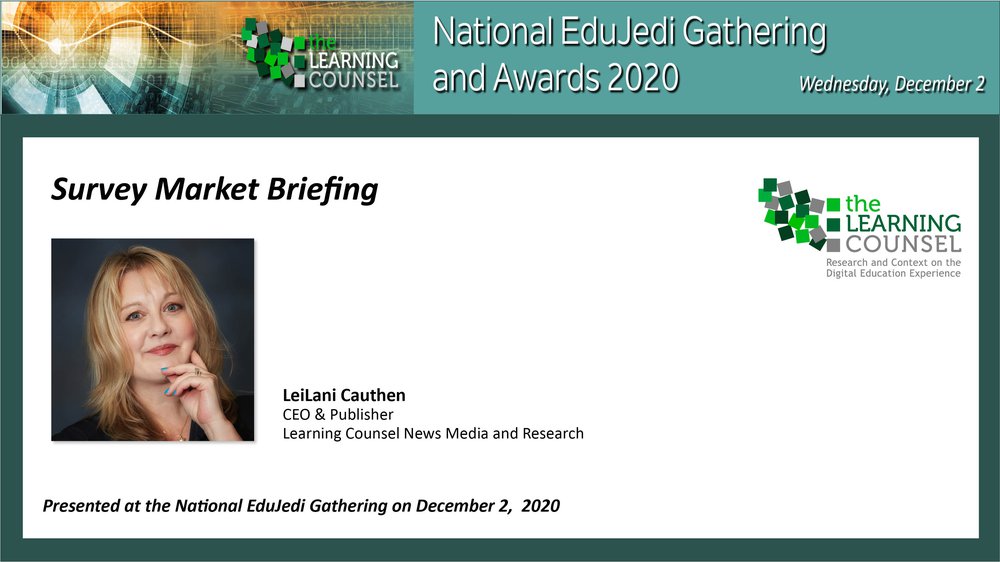In one of the most anticipated events each year at the Learning Counsel’s National EduJedi Gathering and Awards, CEO and Publisher LeiLani Cauthen delivers the 2020 Digital Transition Strategy Survey Market Briefing. This year, 32,827 educators engaged with the survey, which included a 300 percent Increase in responses from small and medium sized schools and districts.
This year’s top takeaways include:
- Smaller states and most small districts joined the Ed-Tech transition.
- Hardware and major systems software spend tripled while digital curriculum continues a steep rise, driving change in operations.
- Social-emotional needs of students is now cited as the number one pressure point, with hybrid logistics the second biggest concern.
- Schools and districts are on their way to new personalized learning models to fight alternative schooling competition but are still heavily whole group teaching oriented.
- The nation needs a major amount of education on what software can and should do for distributing instructional material, creating easier workflow to unburden teachers, and instituting atomized identity management to provide true personalization.
Also, of immediate concern is the sharp increase away from traditional education among American families. In 2020, the average defection away from traditional public was 3.6 percent per district to any alternative. Many districts are experiencing well above that. The estimate of 33.6 percent now opted out is very conservative. Expectations by many districts that enrollments will come back after the pandemic and figures of 5-15 percent loss is “temporary.”
“Just so you have a reality on what's happening with the survey at the top level,” said Cauthen, “Is that smaller States and most of their small districts joined the EdTech transition. A lot of schools just went all-in 1:1 devices getting rolled out for a ton of students, hardware and major systems software spend tripled while digital curriculum continues as steep rise and is driving a change in how they're operating in schools and districts. They're having to hire on instructional technology, people and rearrange things. Some of them are doing frontline teaching, backline teaching. They have teachers doing the direct instruction. And then in the back end, they're having some teachers allocated just to create more lessons because they weren't really ready for going all remote learning in the fall.”
You’ll be amazed at the level of detail and what you will learn. This is a Must-See presentation.











